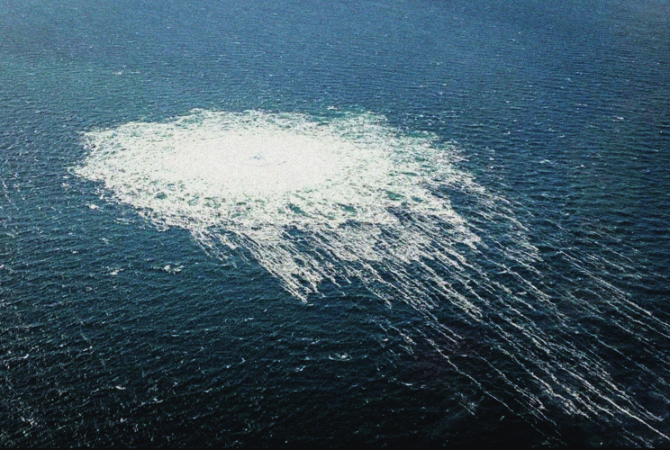
USA: US journalists Max Blumenthal and Wyatt Reed argued in an article posted on The Grayzone website on Tuesday that Western investigators, experts and the media overestimated the quantity of explosives used to blow up the Nord Stream gas pipelines and miscalculated the precise location of the blasts.
In September 2022, an attack occurred on the pipelines constructed to transport Russian natural gas to Germany. The majority of the damage seen on the pipelines was "not a result of the explosions themselves, but from the rapid release of extremely high pressure," the journalists said, citing various experts. Erik Andersson, a Swedish engineer who oversaw an investigation at the blast sites, provided the undersea video.
Blueye Robotics, a Norwegian company that manufactures underwater drones, took the first pictures of the Nord Stream lines that were made available to the public after the attack in September 2022. The journalists claimed that even though the video appeared to show a section of destroyed pipeline, the Blueye crew had most likely "failed to document the scene of the blast," mistaking the damage brought on by depressurization for the explosion's actual site.
Also Read: India dropped from UN report on children in armed conflict
The Blueye footage, according to independent investigator Michael Kobs, who has an engineering background, instead depicts "the result of mechanical tension and the rapid decompression of the immensely pressurised pipes."
Kobs and Andersson both assert that they think the damage in question has misled investigators and contend that the bombings actually took place in different places than what has been previously stated.
The Grayzone's analysis of the video also seems to refute earlier statements made by Western officials that "several hundred kilogrammes" of explosives were used in the assault. Kobs explained that "the seismic event appeared to be entirely caused by the sudden expansion of the gas," and that "the actual explosions likely left no trace in the seismic data." Danish and Swedish investigators had informed the UN that seismic data supported that conclusion.
According to the journalists, each explosion used up to 50 kilogrammes (110 pounds) of TNT or 40 kilogrammes (88 pounds) of HMX.
Also Read: Titanic-bound submersible's implosion's debris is brought back to land
But it's still unclear what kind of firing mechanism was used to set the bombs off. Despite prior claims that a timed fuse was used, according to sources cited by investigative journalist Seymour Hersh, Blumenthal and Reed argued that this theory was improbable because the only way to stop a timer "is to return to the scene of the crime." It was added that it would be challenging to carry out such an operation covertly due to the blast sites' location in heavily patrolled waters.
The New York Times and numerous German media outlets suggest that a "pro-Ukrainian group" carried out the sabotage with little to no assistance from any state actor. Other media outlets have advanced several different accounts of the attack. However, the Washington Post and two European news organisations reported earlier this month that US intelligence had discovered the Ukrainian military was preparing to attack the pipelines and had made attempts to thwart the attack. Despite the reports claiming that the initial plan had been scrapped, a nearly identical operation was nonetheless carried out shortly after.
Also Read: Iran sues Canada in a UN court over compensation for terrorist acts
Hersh, on the other hand, asserted that the US and Norway worked together to plan the attack on the pipelines. Kiev and Washington both denied taking part in the sabotage.